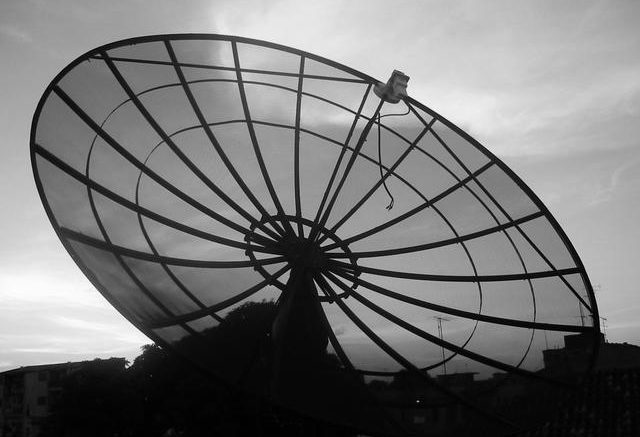It’s another one of those terms the old-timers use. Generally pronounced “smat-vee,” SMATV is a term that means using one dish to serve multiple apartments. In the past, it meant one big, ugly dish like the one in the picture above. Today it’s likely to be a DIRECTV dish just like you’ll find on a home.
Before cable, before satellite, before many of us were born, apartment dwellers outside the city had a problem. While suburbanites in single-family homes could put large antennas on their roofs, apartment denizens had to make do with smaller, inferior inside antennas. Remember, this was before modern amplified antennas came around and made indoor antennas respectable.
The answer
The answer was a “master antenna.” The owner of the apartment put one antenna on the roof and with the help of an amplifier and a lot of wire, every TV in the building could be served. This wasn’t a perfect solution because the antenna couldn’t be rotated or some people would lose signal. Still, master antenna television, or MATV, gave access to TV to people who wanted it, and that was something.
Later, MATV started to mean “headend TV.” In other words, there were as many antennas as it took for every local channel to come in clearly, all properly aimed. The antennas fed a series of modulators which then sent a signal straight to people’s TVs. In cases like this, channel numbers were often ignored; broadcast channel 4 might be re-mapped as channel 3 so that more channels could be fit in the space between channels 2 and 13 without any problems.
Where you find this stuff
If you’ve been in an older hotel, you have probably experienced this sort of system. However, while it did give good local TV reception to apartment dwellers and hotel visitors, it still wasn’t enough. Believe it or not in the 1960s and 1970s television in a hotel room was a big deal. It was an attraction all on its own, and hoteliers jumped at the chance to add satellite services to their MATV setups. “Free HBO in room,” believe it or not, was a selling point, as much as “free Color TV.” Oh, how the world has changed.
Early “satellite MATV,” or SMATV, systems, used several satellites to tune different signals and combine them into a modulated signal so that in addition to local programming the viewer got HBO, CNN or any of the handful of early satellite TV stations. Later of course, with the advent of direct broadcast satellite (DBS) systems like DIRECTV and DISH this got easier.
SMATV today
Today SMATV refers to a modulated headend system like Technicolor’s COM3000. A separate satellite receiver, built onto a slim card, is used for every channel and the channel numbers are assigned according to the preferences of the system designer. A system like this can give a few dozen channels over a single wire with no extra hardware in the guest room or apartment.
There are other choices. You can put a receiver in each room if you wish. This is not a SMATV system because there is no headend and no modulator. On the other hand, a receiver in the guest room will allow every guest to choose their own individual channel in the programming package. This makes for more choice and higher satisfaction.
If you want to upgrade your hotel experience, call the experts at Signal Connect! We can show hotel owners the path forward into the 21st century! Call now at 888-233-7563 or fill out the form below and we’ll get back to you, usually within 24 hours.




